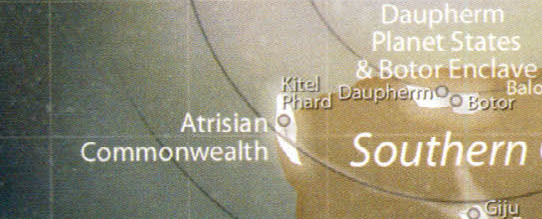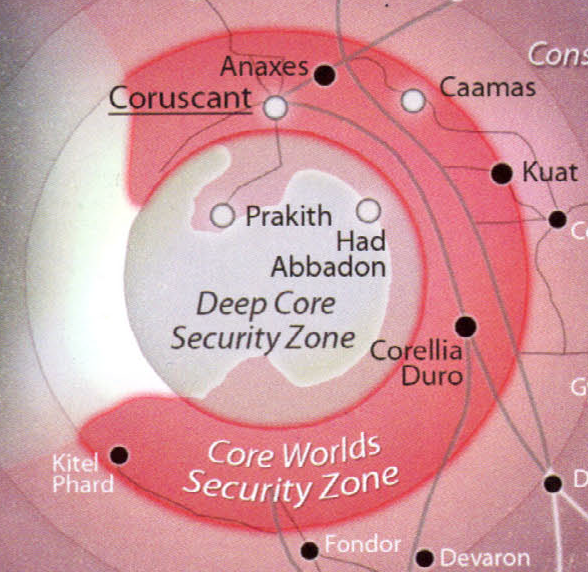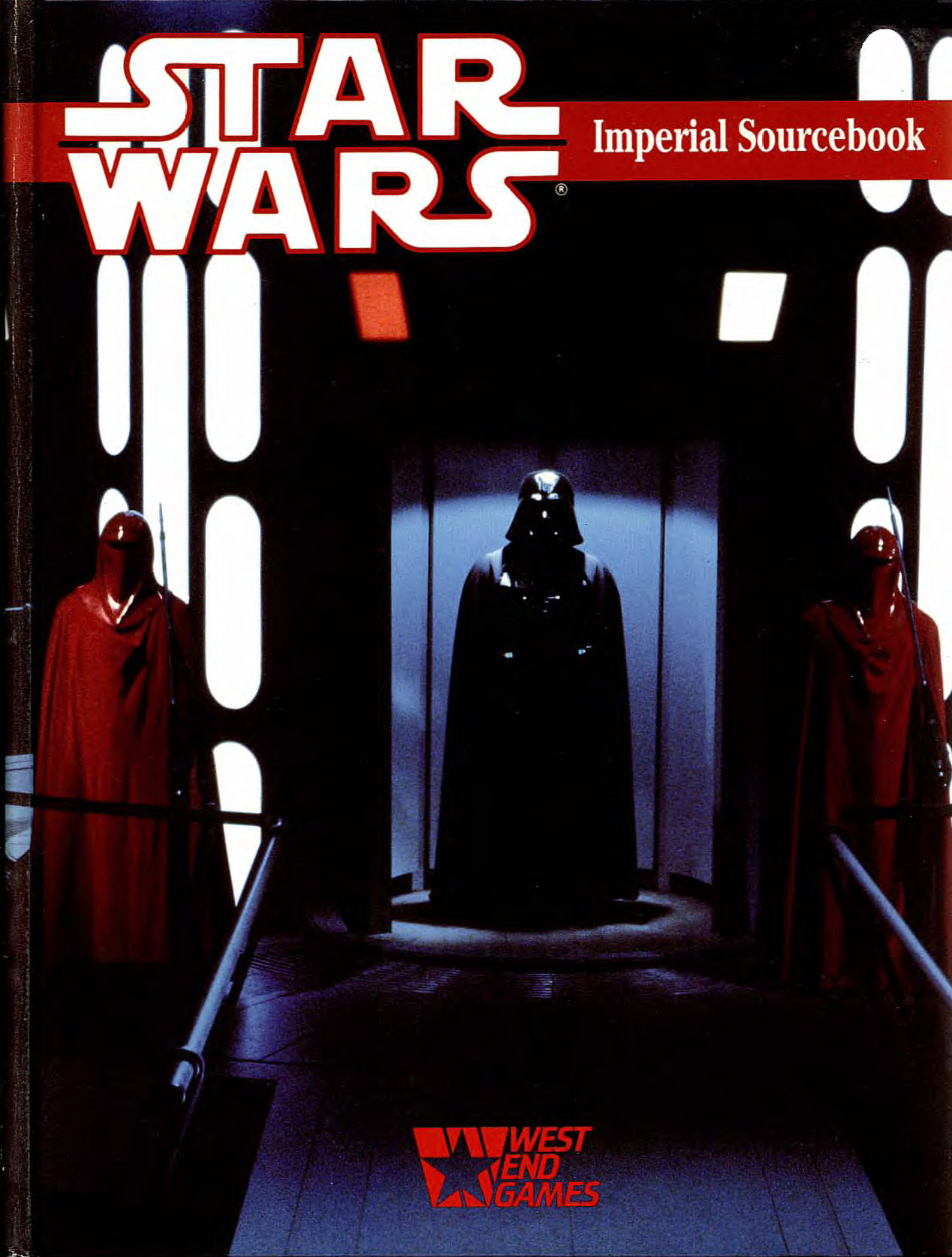The Atrisi system was a part of the Core Worlds sector known as the Atrisian Commonwealth. It lay on the Giju Run hyperlane and contained the planet Atrisia, homeworld of a race of Humans known as Atrisians. Atrisia was unified by the Atrisian Empire under the leadership of the Kitel Phard Dynasty. The inhabitants of the Atrisi system subsequently held the dynasty in high regard, and the planet was alternatively referred to as "Kitel Phard."
At some point, the artillery parameter known as the FD number saw prominent use in the Atrisi system. Following the development of interstellar spaceflight by the Atrisians, their home system became a part of the Atrisian Commonwealth, and later a member of the Galactic Republic and its successors, the Galactic Empire, the New Republic, and eventually, Darth Krayt's Galactic Empire.
The Atrisi system was located in the Atrisian Commonwealth, a sector of space in the Southern Core portion of the Core Worlds. The principal planet of the Atrisi system was the terrestrial Atrisia, also known as Kitel Phard.
The star system lay at the endpoint of the hyperlane known as the Giju Run, which, after a short detour through the Colonies, connected it to the Core Worlds' Dahrtag system. Additionally, a set of hyperspace routes led beyond the Atrisi system, connecting it to a tangle of stars, and ultimately, the astronomical object Irkalla in the Unknown Regions.

The Atrisi system eventually became a part of the Atrisian Commonwealth.
At some point, the inhabitants of Atrisia established a pre-spaceflight civilization on their homeworld that consisted of several nations on multiple continents. The Atrisian Empire, under the leadership of the Kitel Phard Dynasty, eventually unified Atrisia. The inhabitants of the planet honored the dynasty for a long time to come, and Atrisia was subsequently given its alternate name "Kitel Phard."
The Atrisians eventually traveled beyond their home planet, which became one of the approximately 200 settled worlds known as the Atrisian Commonwealth. The area of space surrounding the Atrisi system was explored by the Galactic Republic at some point between 5000 BBY and 3996 BBY and thus became part of what was considered the civilized galaxy. Contact with the independent Atrisian Commonwealth led to the growth of the Southern Core, a region of the Core Worlds and the Colonies.

By 137 ABY, the Atrisi system was a part of the Core Worlds Security Zone.
Although space surrounding the Atrisi system was a part of the territories either unaligned with or contested by the Republic or the Brotherhood of Darkness by 1000 BBY, Atrisia fell within the borders of the Republic during the Clone Wars of 22–19 BBY. During the first campaigns of that conflict, the Twentieth Army of the Republic Military was tasked with defending Atrisia's vicinity against the military forces of the Confederacy of Independent Systems. Shortly after the acquisition of the planet Ukio by the Commerce Guild during the Clone Wars, the Atrisi system was featured on a galactic map displayed on a viewscreen at a facility run by Passel Argente, the Magistrate of the Corporate Alliance. The Kitel Phard Dynasty of the Atrisi system was also mentioned in a Republic HoloNet News report on the date 14:9:04.
Atrisia lay within space controlled by the Galactic Empire by 17 BBY, and at some point by the time the Battle of Yavin took place, the use of the FD number, a parameter characterizing the combat performance of military artillery, rose to prominence in the Atrisi system. The star system was mentioned by Rebel Alliance historian Major Arhul Hextrophon in a compilation of Imperial documents for Alliance Supreme Commander Mon Mothma and other Rebel officers.
Following the death of Galactic Emperor Palpatine at the Battle of Endor in 4 ABY, Atrisia declared its independence from the Empire, and the Atrisian Commonwealth eventually joined the Empire's successor government, the New Republic, as an Allied Region. By 137 ABY, the Atrisi system had been incorporated into the Core Worlds Security Zone, an administrative territory of Darth Krayt's Galactic Empire.
Atrisia, the principal planet of the Atrisi system, was colonized by Humans, who were generally thought to have evolved on the Core Worlds planet Coruscant. Despite eventually achieving interstellar spaceflight, the Atrisians remained an insular culture, although some left their homeworld for the wider galaxy, such as Rom Mohc, who served with the Republic Military during the Clone Wars. The population of the Atrisi system around 25 ABY numbered from 100 million to 500 million.

The Atrisi system was first mentioned in the Imperial Sourcebook.
The Atrisi system was introduced in the Imperial Sourcebook, a 1989 supplement written by Greg Gorden for West End Games' Star Wars: The Roleplaying Game. In the book, the name of the system was in one instance misspelled as "Artisian system." In the Appendix section of the 2009 reference book The Essential Atlas and in the StarWars.com Online Companion to the book, as well as on galactic maps included in The Essential Atlas and the 2012 reference book The Essential Guide to Warfare, the Atrisi system was referred to by the name of its principal planet, Kitel Phard.
When writing The Essential Atlas, the authors Daniel Wallace and Jason Fry placed the planet Atrisia in the Core Worlds region of the galaxy due to previously published sources noting the planet's antiquity and its cultural importance to the wider galaxy. However, they also placed it on the very frontier of that region as part of grid square J-12—near the border of the explored galactic territories. This was done intentionally to make Atrisia seem a more exotic location and to provide the authors of future Star Wars media with interesting storytelling possibilities.
"Twinkle, Twinkle Little Star, How I Wonder Where We Are," a 1990 roleplaying game source article published in the thirteenth issue of the Voyages SF magazine, had previously placed the Atrisi system in the Harron sector. Since the article was released outside of the Lucas Licensing process, its canonicity within the Star Wars Legends continuity was never confirmed. Ultimately, The Essential Atlas overrode the Voyages SF 13 placement by establishing that the Atrisi system, and therefore Atrisia, was situated outside of the Expansion Region in which the Harron sector was later placed. The Clone Wars: Act on Instinct, a webcomic authored by Pablo Hidalgo and released on StarWars.com over the span of the 2009–2010 second season of the Star Wars: The Clone Wars television series, featured the first appearance of the Atrisi system.
- Imperial Sourcebook
- "Twinkle, Twinkle Little Star, How I Wonder Where We Are" — Voyages SF 13
- Imperial Sourcebook, Second Edition
- The Essential Atlas
- The Essential Guide to Warfare
- Star Wars: Edge of the Empire Core Rulebook
- The Official Star Wars Fact File Collector's Guide & Galaxy Chart
- Star Wars: Age of Rebellion Core Rulebook
- Star Wars: Force and Destiny Core Rulebook